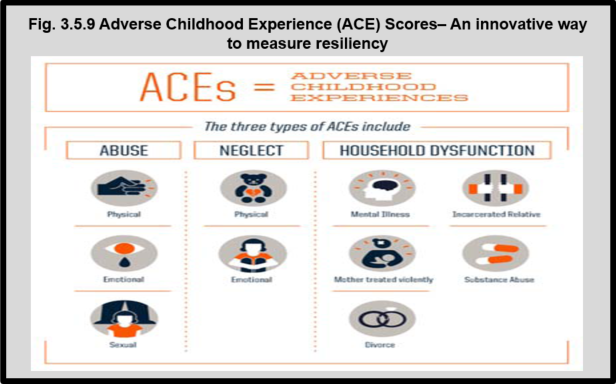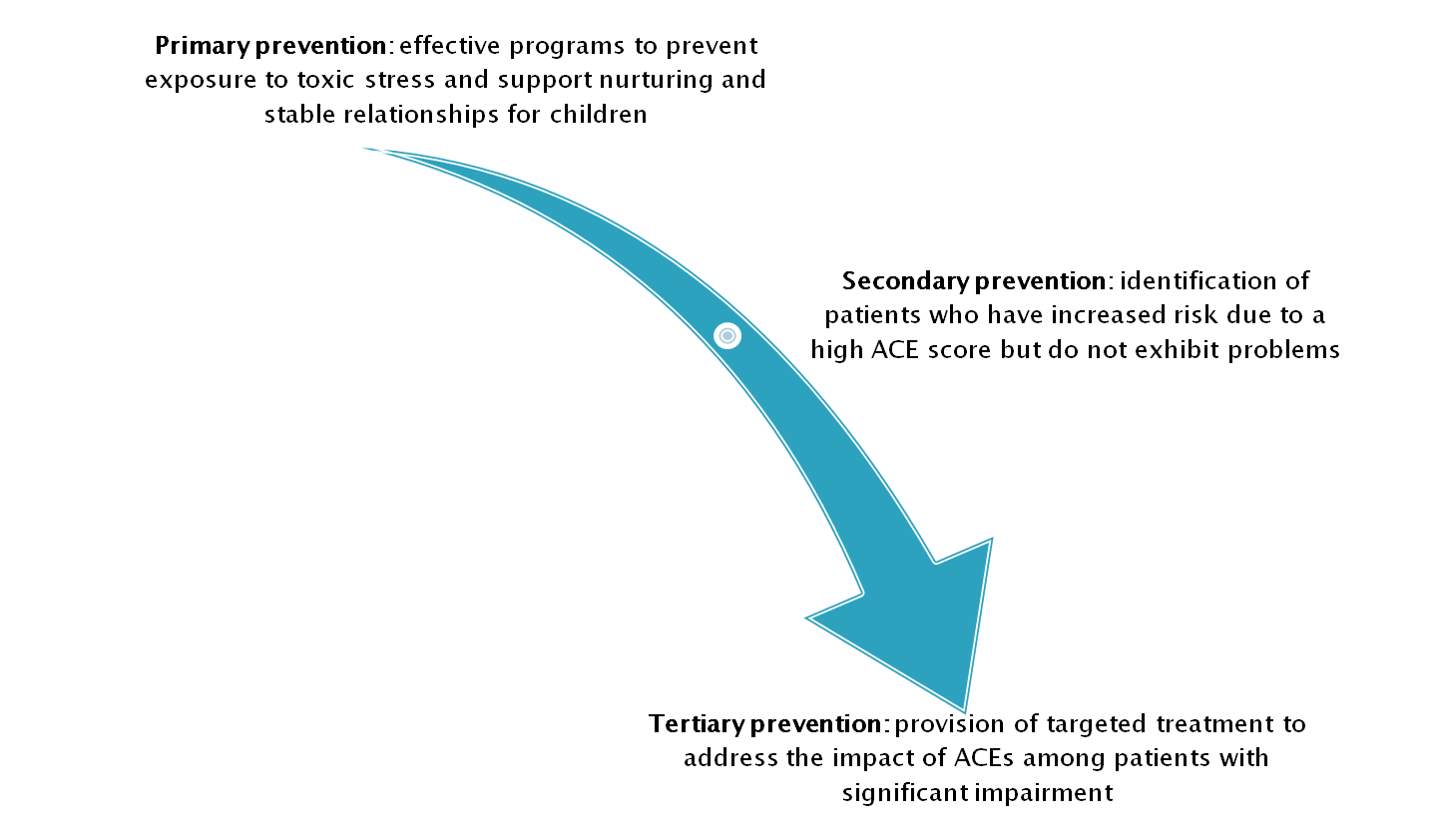3.5.9 Adverse Childhood Experience (ACE) Scores – An innovative way to measure resiliency

Adverse Childhood Experiences (ACE) Scores
Traumatic events such as abuse, neglect, and household dysfunction that occur before age 18 are referred to as adverse childhood experiences (ACEs).
The term ACE was developed in 1998, when a U.S. not-for-profit healthcare consortium Kaiser Permanente partnered with the Centers for Disease Control on the Adverse Childhood Experiences (ACE) Study. This population-based study of over 18,000 adults, examined the connection between negative early experiences and adult health outcomes. Results showed that a higher level of exposure to intense childhood stress, triggered by ACEs increased an individual’s likelihood of developing physical, behavioural, and social problems in adulthood.1
Individuals get their ACE score by answering a series of questions about negative experiences related to abuse, neglect, and household dysfunction that occurred in their first 18 years of life. Participants are then assigned an ACE score based on how many negative experiences they encountered. The higher the ACE score, the greater the risk for developing health and social problems in adulthood.1
1Alberta Family Wellness Initiative. Adverse Childhood Experiences (ACEs): A measurement tool for public health practitioners and clinicians. http://www.albertafamilywellness.org/what-we-know/aces-accessed July 29, 2017.
2Felitti, VJ et al. American Journal of Preventive Medicine 1998. 14:245-258. http://www.acestudy.org -accessed June 26, 2017.
Impact of ACEs
As ACE scores go up, so do risks for:2
• Organic diseases (pulmonary, heart & liver diseases)
• Smoking
• Adult alcoholism & illicit drug use
• Depression and suicide attempts
• Multiple sexual partners & sexually transmitted diseases (STDs)
• Poor health-related quality of life
• Intimate partner violence
• Adolescent pregnancy
• Unintended pregnancy
• Fetal death
The Importance of Resiliency
Resilience factors borne out of ACE concepts include:
• Asking for help
• Developing trusting relationships
• Developing positive coping strategies
• Paying attention to feelings
• Developing a positive outlook
As a result of the plasticity in brains, resilience factors can mitigate or reverse the potential for poor outcomes. Resilience helps explain why some individuals who have experienced trauma do well while others do not. It is important to focus on prevention of ACEs and recovery from ACEs to decrease the burden of poor health outcomes.
Strategies to Help Prevent ACEs and Promote Resilience
Strategies include primary, secondary and tertiary prevention.

How ACE Scores Can Be Used
ACE scores can help to determine what types of interventions and treatments will be most effective. For example, when working with parents who have high ACE scores, practitioners can use the ACE information to treat the parents while at the same time help prevent their children from experiencing the same cycle of intergenerational abuse, neglect, and dysfunction. ACE scores are also used in pediatric settings. In this case, practitioners identify children experiencing, or at risk for, toxic stress, and then address symptoms and sources using integrated multi-disciplinary care models that help build resiliency. The ACE Questionnaire is not a diagnostic tool but instead helps supply vital background information to help practitioners assess individual patient needs.1
Conclusions
• ACEs are common and co-occur.
• Findings show a graded association with number of ACEs for the majority of adult health outcomes.
• The ‘tipping point’ for clinical relevance appears to be at least 3 ACEs.
• Children who experience BOTH abuse and family dysfunction have the highest risk for mental health problems and chronic pain in adulthood.
• Strategies to promote resilience in the face of adversity are important
